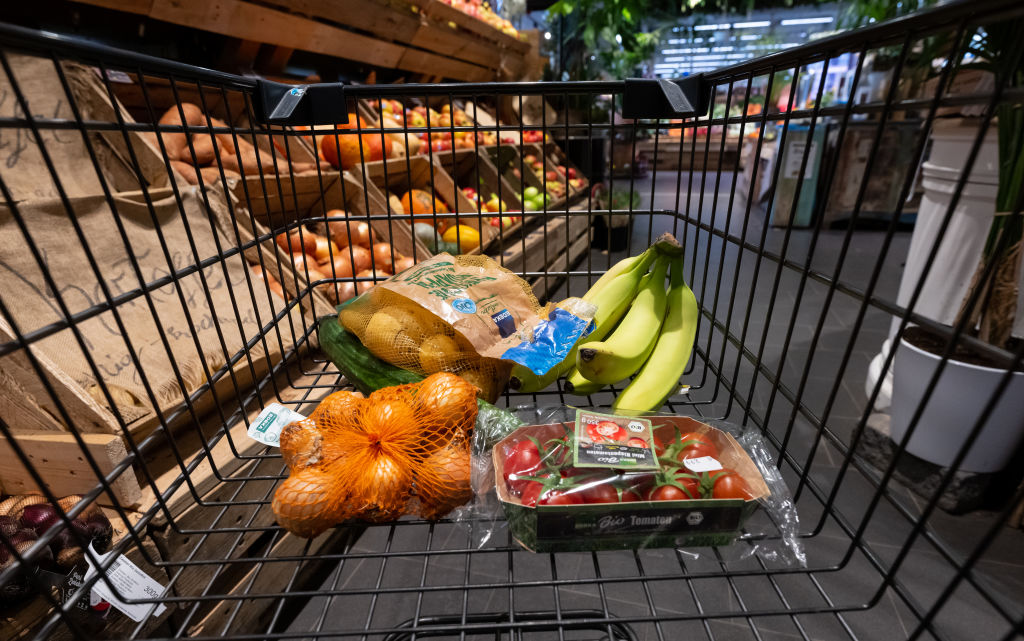How much are you paying at the grocery store? By the time you pick up your meat, eggs, poultry, and double-stuffed Oreos, your grocery bill is a few dollars more than last time. Every week, it is always a few dollars more. At first, it might seem like no big deal, but it eventually becomes a problem when it is constantly increasing week to week, in addition to your unforeseen bills.
Where’s the Beef?
With food prices not returning to pre-pandemic levels anytime soon, American shoppers are taking action, says a new study. According to C+R Research, 85% of U.S. consumers say they are paying an average of $139 more for groceries since the Coronavirus pandemic hit the country. The survey found that 88% of shoppers are worried that food prices will continue to rise in the months to come.
 As a result, about two-thirds are cutting back on their food budgets during the public health crisis. Some of the measures being employed involve searching for discounts, eating less meat and poultry, buying in bulk, and ditching the organic items. It has gotten so bad out there that roughly two-thirds revealed they would spend most of their second stimulus check on groceries.
As a result, about two-thirds are cutting back on their food budgets during the public health crisis. Some of the measures being employed involve searching for discounts, eating less meat and poultry, buying in bulk, and ditching the organic items. It has gotten so bad out there that roughly two-thirds revealed they would spend most of their second stimulus check on groceries.
This comes as Liberty Nation recently reported that the planet could potentially endure a food crisis. In the developed world, food inflation could be the biggest negative factor amid the pandemic. In developing markets, shortages might be more common and pronounced. Whatever happens, food could be one of the significant headline-makers over the next 12 to 18 months. Perhaps it is time to stock up on Mr. Noodles and Chef Boyardee.
Cooling on Cash Amid COVID-19
The coronacrisis has claimed many victims since the virus emanated from the remote caves (or laboratories) of China. One of the casualties in this public health crisis has been cash, forcing central banks to remove some currency from the system over contamination fears and prompting consumers to rely on pieces of plastic for their purchases.
Before the financial crisis, approximately 20% of Americans rarely or never carried cash, using their credit or debit cards. A new Travis Credit Union study has found that it is unlikely to change since many Americans are in support of a cashless infrastructure and society.
The poll discovered that more than half (58%) plan to no longer use cash following the COVID-19 pandemic. Moreover, one in three are not using cash because of health concerns, and one in two have avoided a situation that required cash. Seventy percent believe the United States will become a cashless country comparable to places like Sweden or Denmark.

(Photo by Sven Hoppe/picture alliance via Getty Images)
An interesting development in the covidepression has been the national coin shortage. The Federal Reserve has warned about the lack of coins in the system, but not too many Americans are feeling the effects of the latest trend. The survey revealed that respondents only experienced the ramifications of fewer coins in the system when making small purchases, getting change, or running household errands.
The central planners do not need to impose the elimination of cash. Consumers are doing it of their own accord – and this could lead to unintended consequences for many people.
I (Kinda) Love New York
The great New York City exodus has been well-documented this year. Over the last six months, there has been a steep decline in the city’s real estate market, creating tremendous opportunities for anyone who wants to live in Manhattan. But as people flee The City That Never Sleeps and the Coronavirus pandemic continues to hamstring the Big Apple, bars and restaurants are taking a major hit.
A new report by the nonprofit NYC Hospitality Alliance found that 87% of New York City’s bars, restaurants, and nightlife venues could not pay full rent in August. Landlords are ostensibly not making any concessions for their tenants. It is estimated that 60% of restaurant landlords have not waived any rent, and only one-third have provided a 50% discount on rent. They are potentially counting on the reopening of indoor dining at 25% capacity starting September 30 to support these dining establishments.
But who knows if the industry will ever recover? Since the virus outbreak, more than 1,000 restaurants have closed, and thousands of employees have lost their jobs. It is part of the broader national trend of companies permanently shutting down after suspending operations at the height of the outbreak. The remaining restaurants in New York have survived the summer months, but there is a concern about what happens in the autumn and winter.
The late great Bobby Short’s iconic tune may need an adjustment: “I happen to sort of, kind of, maybe like this town.”
~
Read more from Andrew Moran.



